
This has recently been modified in Africa in order to sow woodlands using a carbon rich mix which is an excellent idea. This also confirms that knowledge of bio char has how penetrated the global agricultural base. This is wonderful news. The global agricultural movement marches on.
The quoted cost there is a penny per ball, cheap enough for broad application everywhere. We even see folks tossing the balls out of helicopters.
These balls sit there until hit by a rain fall which naturally activated the seed.
This idea was presented to me in the 1980's using cross linked polymers as a carrier and for reforestation. It never got off the ground and this approach has the advantage that it is user friendly for all dirt farmers in particular who do need exactly this technology.
..
MAKING SEEDBALLS: AN ANCIENT METHOD OF NO-TILL AGRICULTURE
JUNE 18, 2014
BY ANDREW SCHREIBER
https://permaculturenews.org/2014/06/18/making-seedballs-ancient-method-till-agriculture/

Dried and Finished “Clay Dumplings”
What’s a Seed ball?
Seeds balls are an ancient technique for propagating plants from seeds without opening up soil with cultivation tools such as a plow.
The rediscovery and popularization of seedballs (or “Clay Dumplings” as he called them) in modern times is typically ascribed to Japanese natural farmer and philosopher Masanobu Fukuoka.
As with many natural farmers, Fukuoka believed that tillage over large areas is laborious, destructive to soil health, and ultimately not needed and thus a waste of time and energy. Thus, seedballs have become an important aspect of many natural farming and conservation enterprises around the world.
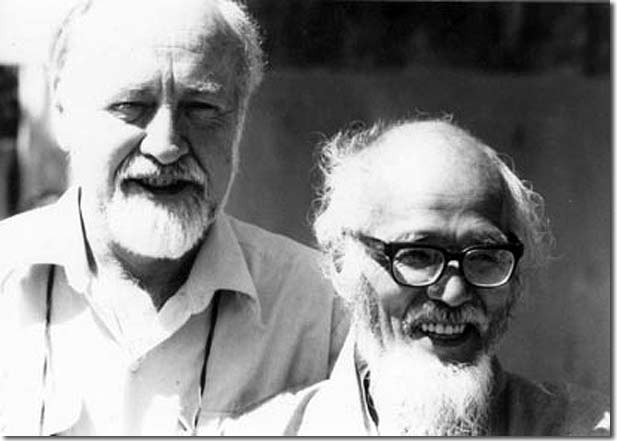
Bill Mollison and Masanobu Fukuoka — two great folks
After many years of observation and experimentation, Fukuoka developed a method of growing rice, barley, vegetables and fruit over his small farm with very minimal disturbance of the soil or need for fertilization. He referred to these methodologies and philosophical perspectives as “natural farming”, and wrote several inspiring and informative books on the matter. The One-Straw Revolution, and Sowing Seeds in the Desert being two of the most renowned.
The architecture of seedballs is pretty basic: seeds are combined with clay (preferably red volcanic clays) and organic material like compost, worm casting or well-decomposed manure. A portion of fibers such as paper mash, finely cut straw, cotton or wool can also be added to give the seedballs greater tensile strength.
The mixture is moistened and formed into compact lumps or balls, allowed to dry, and then cast out into fields at the appropriate time of year, depending on the seed mixture, climate and rainfall patterns.
Why are seedballs so great?
With knowledge, skill, and patience, seedballs can be as effective a way of establishing plants as plow-seeding or drilling, and they can be made by anyone anywhere in the world that has access to clay, soil, and seed — for no money.
Seedballs are commonly employed in urban areas where tillage is simply not an option. But seedballs can be just as relevant to people in broad-acre contexts such as at the Windward Education and Research Center where seedballs have been employed to establish perennial pasture on marginal degraded highlands where steep slopes, existing woodlands, shallow soils/exposed bedrock, and general rockyness make the use of seed-drills and rippers impossible.
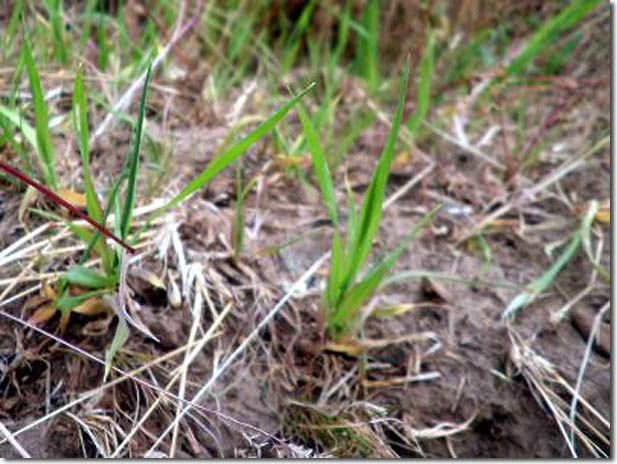
Some young wheat grass from previous year’s seedballs
The complexity of seed species, guilds and companion plantings is infinitely complex — from a single crop to a successional assemblage composed of all the species for a mature ecosystem, along with all the pioneer and mid-succession plants needed to bring a degraded landscape back into productivity.
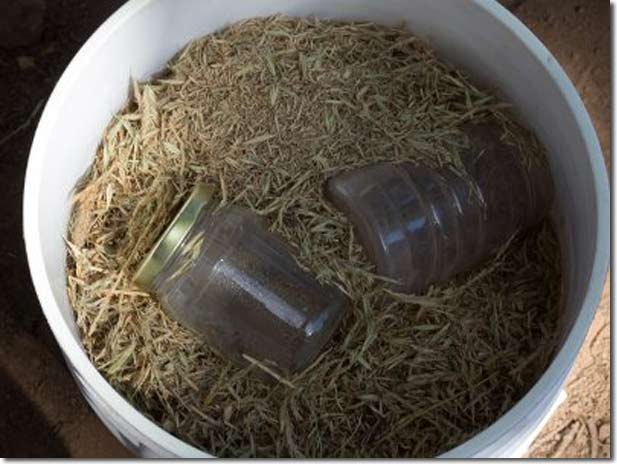
A mixture of dozens of perennial grasses, forbs and legumes
Seedballs can also be used to “over seed” existing ecosystems, without damaging the soil structure — or to seed productive plants into forested areas and steep hillsides where tillage is not possible. Seedballs can also be used in combination with animals such as pigs who will do the work of shuffling the mulch around providing seedballs extra cover.
Preparing your Materials
Seedballs are made from mixture of clay, compost, and seeds. Each of these materials need to be processed to ensure that the clay and compost are relatively fine textured, and that the seeds are winnowed to remove hulls and casing.
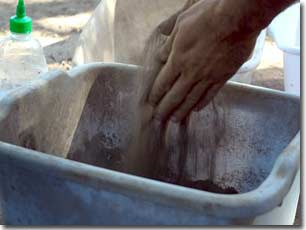
The dry sifted clay
Fukuoka and many others recommend the use of red volcanic iron-rich clays for seedballs, claiming that white and grey clays do not form the same kind of polymer as the red clays and tend to make more brittle seed balls. However, if white and gray clay is what you have on hand, I would recommend experimenting with it. Native clays are liable to be a more economical and wholesome resource than imported ones.
Sometimes your clay will need to be pulverized and screened to remove rocks, stubborn clods and vegetative material.
A bucket and mattock handle are simple and effective clay pulverizing tools. The process matters little, so long as the end result is a fine and relatively pure clay.
Both the clay and the compost may need to be sifted to achieve the desired result. For those familiar with making earthen plasters, the sieves used for that are generally well suited to making seedballs.
We typically use a series of three screens tacked to the bottom of 2ft by 2ft by 6in deep frames. The first is 1/2inch screen, the second is 1/4inch screen, and the third is 1mm screen.
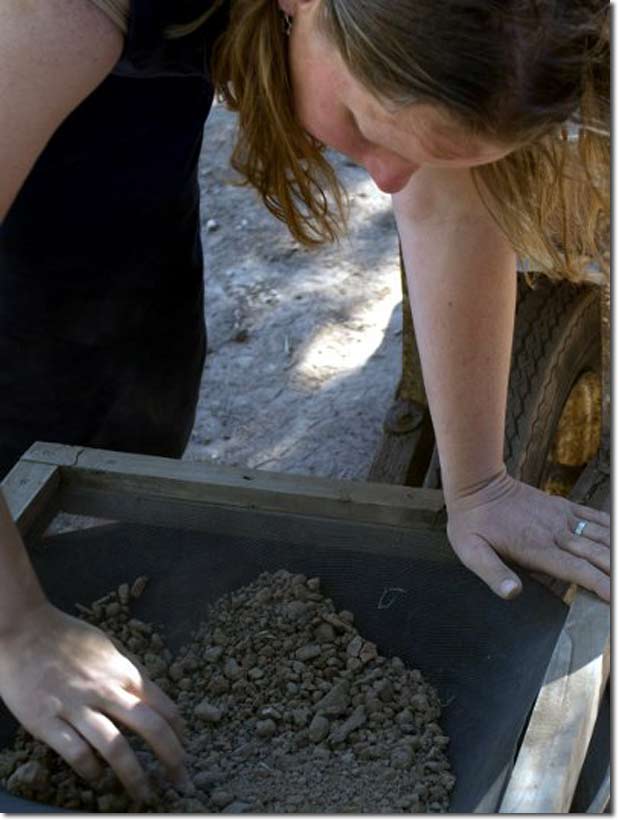
Sifting
Sifting
If you do not have access to screens you can also use a centrifugal effect to separate out the finer particles from the stones and any hardened clods. Do this by placing the clay in a flat bottomed container and placing the container on level ground.
Move the container in a circular motion, keeping the bottom on the ground. You will see the sizes of particles separate out, and you can then scoop out the finer particles, and continue the process as needed.

Sifted manure compost
The compost also needs to be relatively fine and sifted. Any compost or finely decomposed manure will do, however the more biologically active the compost, the better an inoculant the seedballs will be.
Vermicompost is generally already very fine, and of you may already sift the compost in the process of harvesting. It is also very biologically active and contains ready-to-consume nutrients for the young plants.
Other things to add to your seed balls
Beyond this basic recipe you can add a number of other elements depending on the circumstances and desired outcome.
Pest deterring compounds such as those found in the capsicum genus are effective in deterring insects from breaking open the balls and eating the seeds. Artesemias, alliums, mints and black pepper, all have pungent aroma’s which may also deter insect predation.
Inoculating the seedballs with native forest soil can ensure that populations of diverse fungi are present for woody perennial development. Commercial mycorrhizae inoculants are also available and have a good track record.
Legume inoculant can also be included, whether a powdered or peat based. If you have collected from native sources, you can also take a small amount of soil from the rhizosphere of the parent plants. Be sure to check that the parents show evidence of nodulation, otherwise the soil is likely to be lacking the necessary bacteria.
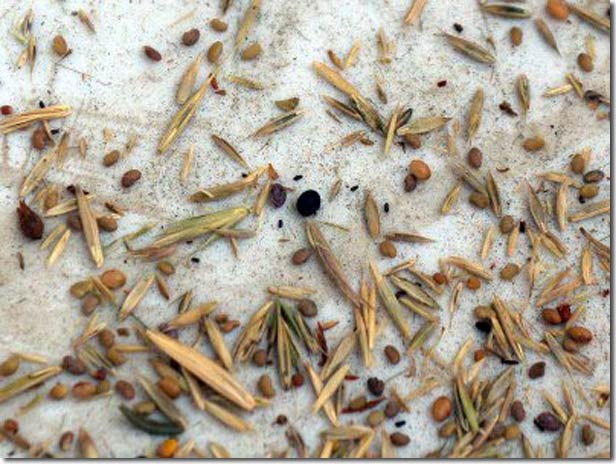
Seeds of pioneering polyculture
Finely shredded paper, cardboard, and plant residues such as rice-hulls have also been incorporated into seedballs to help give them greater tensile strength to avoid breaking open. This is particularly common when seedballs are being dropped from high altitudes, or when the parent clay does not form a hard enough ball.
Making the Seedballs
Making seedballs is relatively simple, but like any craft it takes some time to get the hang of it.
The following ingredient ratios (in volume) is taken from Fukuoka’s suggestion:
5 parts dry powdered clay
3 parts fine sifted compost
1 part seed mix
There are two ways that seedballs are typically made by hand. One involves hand-rolling each ball, and the other involves rolling the ingredients in a flat bottomed pan until they “cake-up” and begin forming round-ish clods.
The ingredients are the same, but the methods differ in their speed and precision. I will be describing the second method using the flat tray.
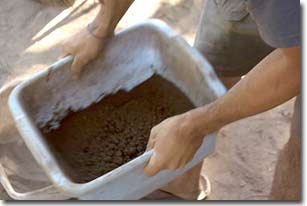
Rolling the balls around in a circle
First, combine all the dry ingredients (clay, compost, and seed) together in a large flat tray, and thoroughly mix.
Some people use large turkey broiler pans as the tray. I have used the ubiquitous 5 gallon bucket, and all manner of plastic soil mixing tubs.
The important part is that the bottom of the tray is flat so the forming balls can roll around. Also, the larger the tray, the more difficult and tiring it is to jostle and shake for extended periods, so scale is of ergonomic importance.
Next, add a few squirts of water to the mix, and rotate the tray in a circular motion. The goal is to start coating seeds with water, so the clay/compost sticks to them. Just like making a snow ball.
Keep adding small amounts of water to coat the balls as they form, so that the remaining soil can stick to the outside.
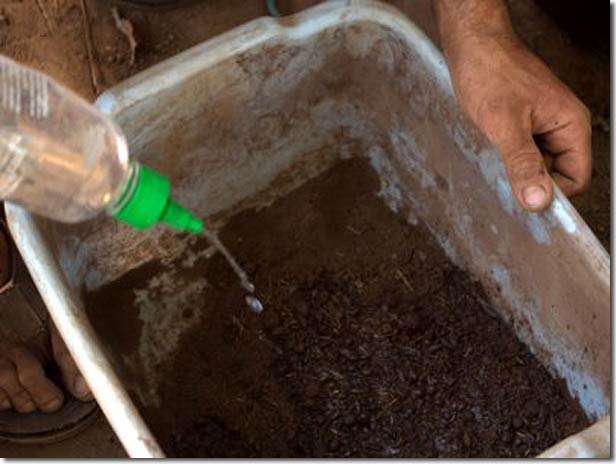
Add a little water
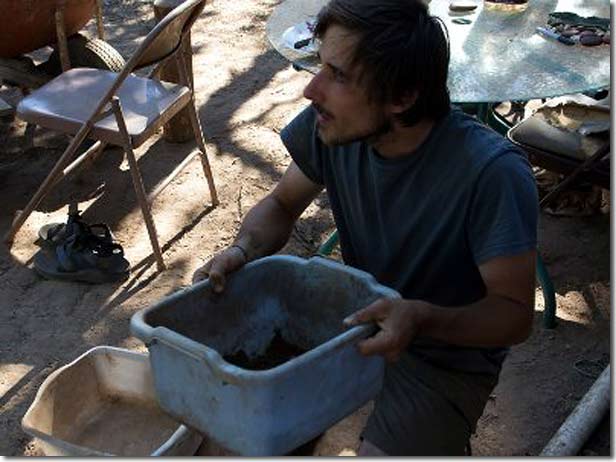
Roll some more
If you are using oblong seeds like those of grass, the “balls” may not be spherical. No worries, so long as the balls firm up, they should work fine.
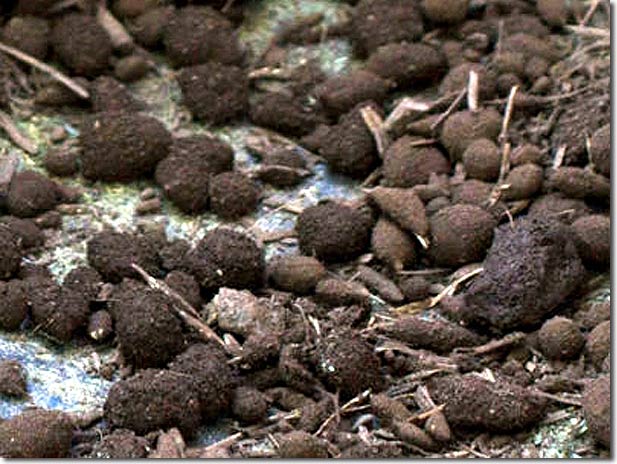
In the end you may end up with randomly shaped, dumpling-like balls such as these
If the seedballs won’t be thrown out immediately, it is important to start drying them straight away.
Making the balls on a sunny afternoon can ensure that they have enough warmth to dry that day. Otherwise, many of the quickly germinating seeds will wake up, sprout and die before they are cast.
No comments:
Post a Comment